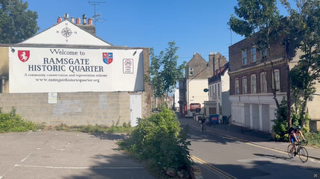
The Isle of Thanet has 2,5000 listed buildings which is the largest concentration in the southeast of England. Most are repaired with Portland cement including those managed by the local authority. There is a real need for heritage skills in the area, for both re-training and apprenticeship programs and most of all the recognition that heritage is the key to the town’s regeneration.
The Ramsgate Historic Quarter is a concentration of early 18th century houses. The sea captains who made fortunes trading with Russia, Norway and New England built grand houses to reflect their status. The area was known as Westminster, not only because the road heads west but because of the high quality of its architecture.
Better known are the white stucco terraces from the Regency era when Ramsgate became a fashionable resort after the Napoleonic wars. A golden age followed with Pugin building St Augustine’s and Coleridge, Darwin and Van Gogh renting on the west cliff. Affluence continued into the 20th century with red brick terraced houses, a grand Edwardian theatre and an art deco lift, today neglected and sold to land bankers as part of the local authority’s asset disposal scheme.
But it’s not just the buildings that are important but the street lighting, paving, clean streets and the end of the dominance of traffic. Ultimately heritage conservation is about quality of life, for the residents and visitors today and to generate jobs and the promote the sense of being part of something we can identify with.
The Ramsgate Historic Quarter Scheme plan to create a permanent heritage building skills school with lime kilns and salvaged bricks and Kent peg tiles at the port and to acquire a building for teaching and administration. Ultimately it is contributing to changing the perceived value of what the area has; magnificent sandy beaches, towering chalk cliffs and some of the finest heritage buildings anywhere in the kingdom.
The first workshop will be on the 26/27th September led by Gerard Lynch.